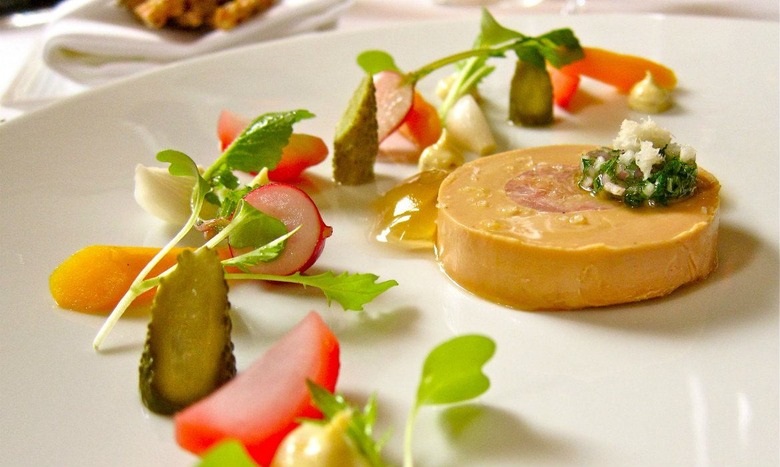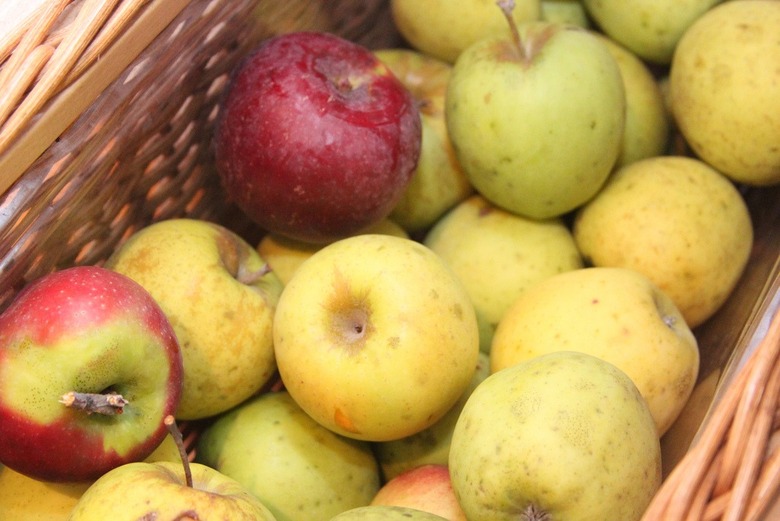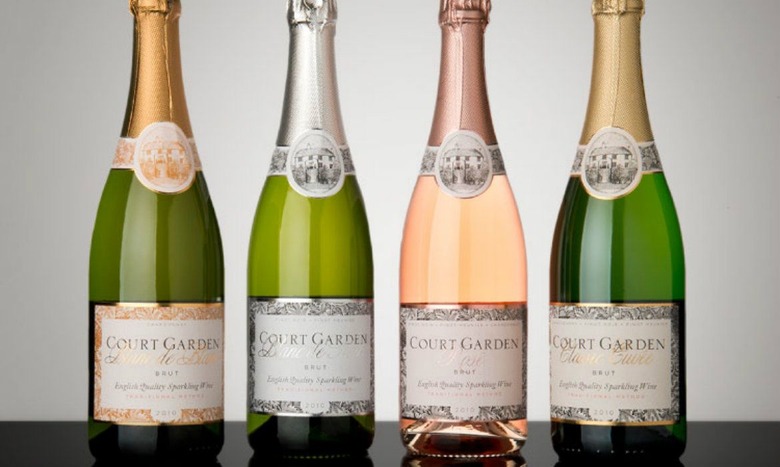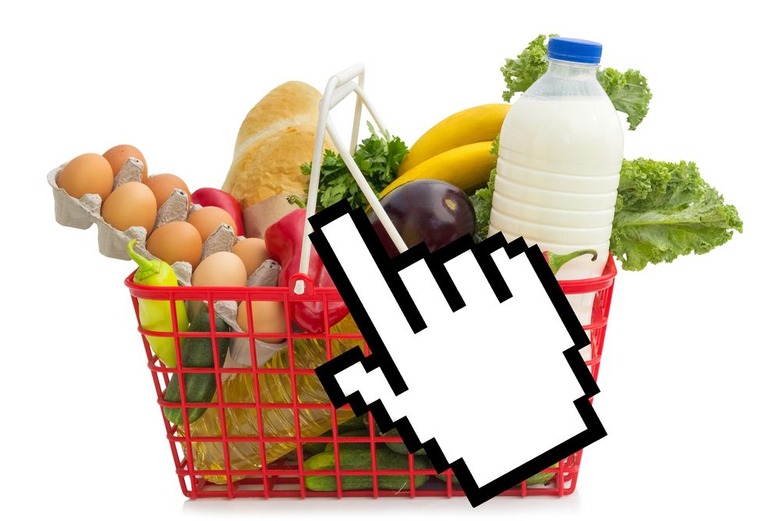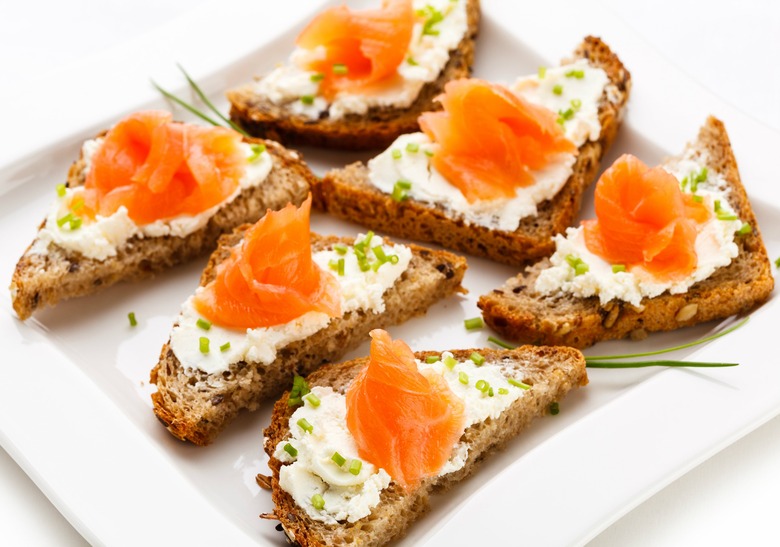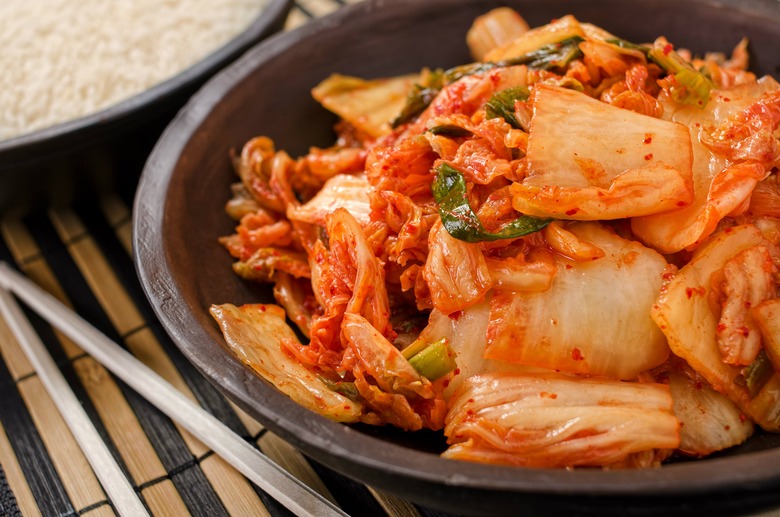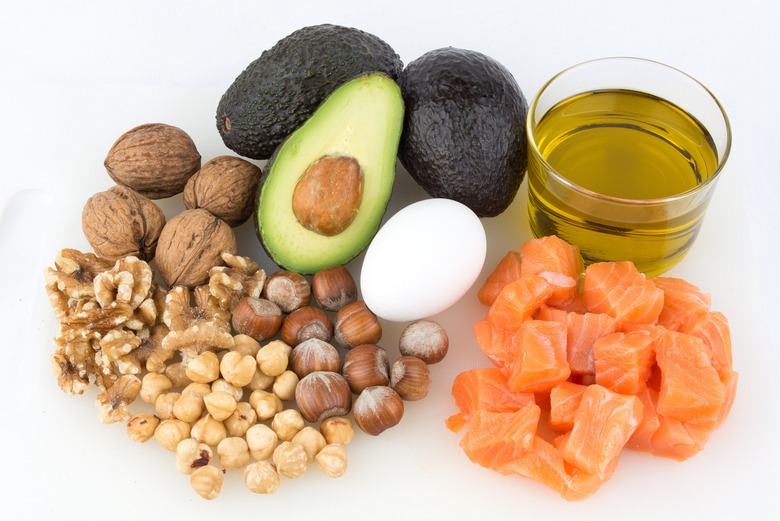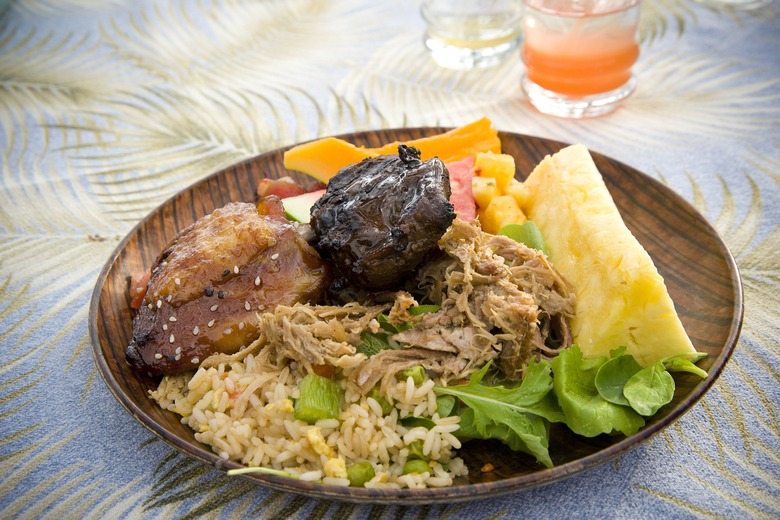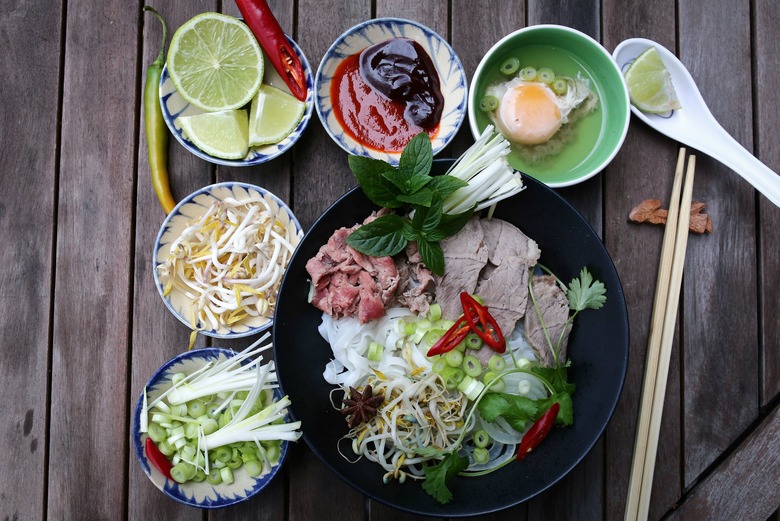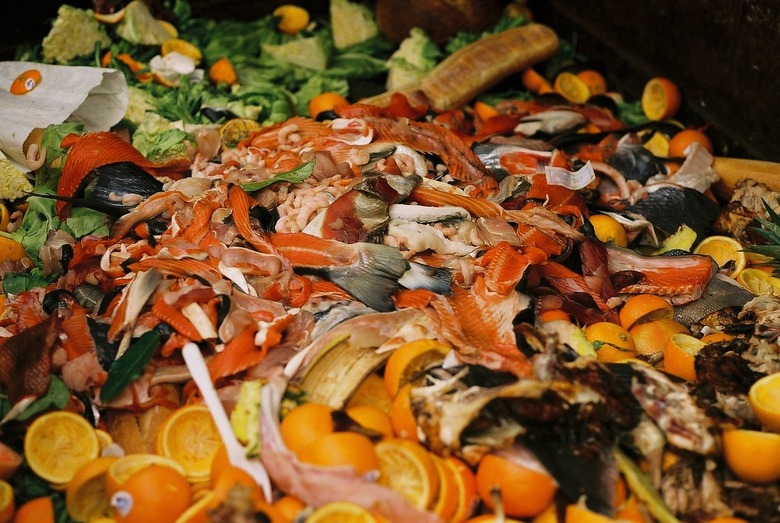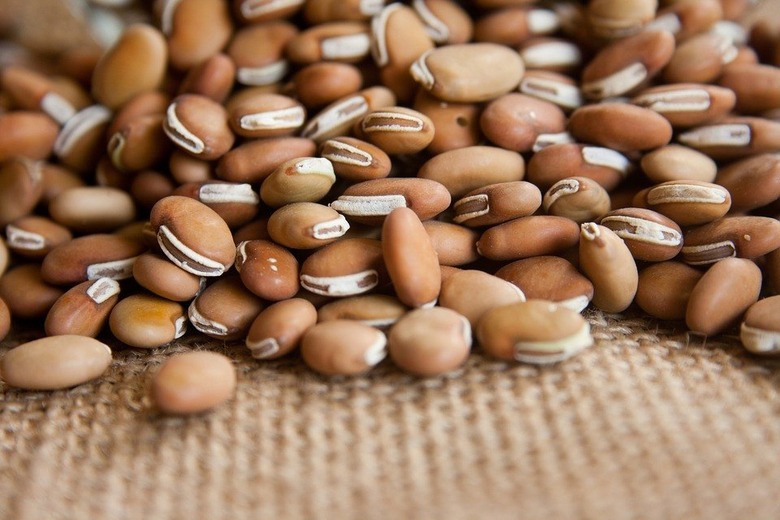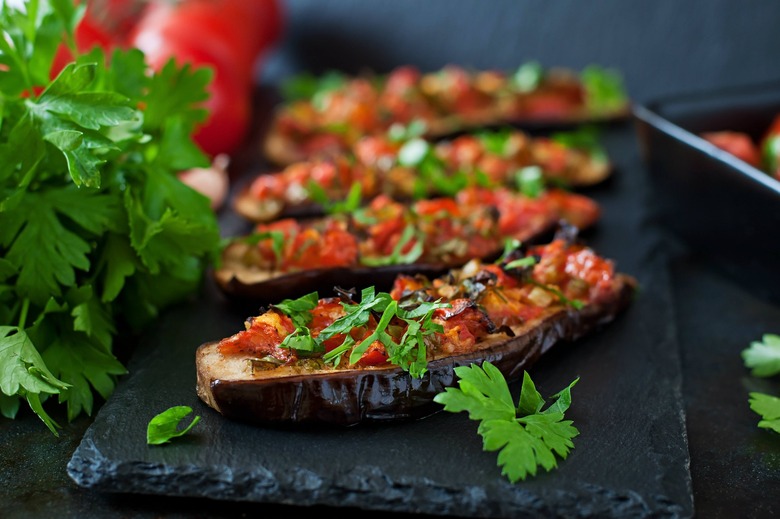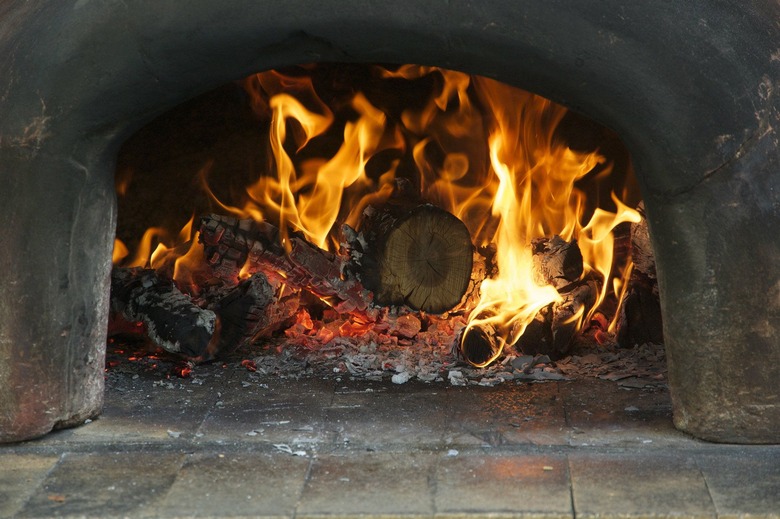The Daily Meal's Top Food And Drink Trend Predictions For 2016
In 2016, we're hoping to see grocery stores embrace "ugly" foods — which deserve just as much shelf space as cosmetically beautiful fruits and vegetables, as well as the return of full-fat foods. After a year of gluten-free, paleo, and clean-eating crazes, we're ready to indulge in fat — and so is the rest of America. Fermented foods, like kimchi and kombucha, remain important because of how much they do for our gut health, which affects our overall health as well.
As Americans get more and more adventurous with their eating habits, we're betting on 2016 as the year that delicious and "exotic" cuisines, like Filipino, Malaysian, and Hawaiian, gain a wider audience. Finally, as whole foods cement their place in the American diet, we're anticipating two important changes to the way we eat — more vegetable-driven restaurant menus as fresh produce gets the respect it deserves; and, as Americans get smarter about sustainability, better welfare conditions for the animals we are eating.
DIY Plating
Aesthetically-pleasing dinner plates aren't just limited to fancy restaurants. The experts at Kendall College's culinary program predict that one of the biggest trends this year will be home cooks creating DIY plating masterpieces that Gordon Ramsay would be proud of. Here are some beginner's tips from chef Elaine Sikorski, Kendall College's baking and pastry instructor: "First, pick the flavor you would like to highlight in the dish — whether it's a protein, ingredient, or sauce. Then choose the texture you want that flavor to have — crispy, creamy, crunchy, or chewy. Finally, decide if you would like to plate symmetrically or asymmetrically. Choose symmetrical plating when working with large proteins like steak or chicken breast. Choose asymmetrical plating when cooking with smaller protein such as scallops or pulled pork."
Embracing “Ugly” Foods
Given how much we know about the problem of food waste — the U.S. alone throws away 133 billion pounds, or one-third, of its total food supply each year — the future of food needs to embrace the ugly side. Perfectly round apples and oranges might look lovely at the grocery store, but there's no reason to toss out produce that isn't aesthetically perfect, which happens all the time. Some companies are already dedicating their resources to projects like the Ugly Fruit and Veg campaign, which petitions major grocers Whole Foods and Walmart to sell cosmetically imperfect fruit in their stores. A global appreciation for "ugly" foods, which would to reduce both food waste and the hunger epidemic, is well overdue.
English Sparkling Wines
Traditionally, the realm of quality bubbly has been dominated by the French — Champagne does come from Champagne, France, after all — but 2016 might be the year that English sparkling wines come into their own. In 2015, the 2010 Court Garden Vintage Blanc de Blancs from Sussex, won a gold trophy and took home an overall gold trophy in the International Wine Challenge, as did the 2011 Wiston Estate Rosé. Bluebell Vineyards, also from Sussex, also won a gold medal for its
Traditionally, the realm of quality bubbly has been dominated by the French — Champagne does come from Champagne, France, after all — but 2016 might be the year that English sparkling wines come into their own. In 2015, the 2010 Court Garden Vintage Blanc de Blancs from Sussex, won a gold trophy and took home an overall gold trophy in the International Wine Challenge, as did the 2011 Wiston Estate Rosé. Bluebell Vineyards, also from Sussex, also won a gold medal for its 2010 Hindleap Blanc de Blancs. In total, English producers earned a total of 14 gold medals for their wines during the 2015 International Wine Competition, compared to five in 2014. Though we don't necessarily expect to see less Champagne, we do think 2016 will see the well-deserved expansion of the market for notable sparkling wines.
Even More Online Grocery Options
As huge companies like Amazon and Google enter the lucrative business of online grocery delivery, it's hard to imagine this trend slowing down any time soon. Given how much simpler restaurant delivery services like GrubHub have made our lives, online grocery shopping is the next logical step for increasingly digital consumers. Imagine, for example, if you could get all your groceries from Trader Joe's delivered directly to you, without ever happening to step foot in that ridiculous line.
Healthy Snacks
Gone are the days of noshing on potato chips during the day. With the popularity of nutritious snack delivery services like NatureBox and Graze, we predict that 2016 will bring a whole deluge of healthier snack products. Think new innovative versions of nut mixes, hummus, and DIY granola bars (buying name-brand bars can cause your daily sugar intake skyrocket). After all, in 2015, the most-Googled recipe was roasted pumpkin seeds.
Fermented Foods for Gut Health
It takes guts to talk openly about your innards, but we predict that more people will be concerned with gut health in 2016. Terms like probiotics and prebiotics have been floating around recently, which are enzymes that lead to a healthy stomach. You can catch up with our guide to gut health here. But basically, all you have to know is that fermented foods like kimchi and yogurt can help balance the good and bad bacteria in your gut, leading to better digestion and even decreased social anxiety.
Full-Fat Everything
In 2015, we talked quite a bit about deceptive food labels. One of the biggest culprits? Anything labeled low-fat. Low-fat products typically are gutted of their natural fat and replaced with hydrogenated vegetable oils, which in turn, are high in trans-fats. Ironically, that's the fat you definitely don't want to consume (and the one that was just banned by the FDA in June). Remember, fat is not intrinsically bad for you. New research from the Credit Suisse Research Institute has shown that sales of "fatty" products Americans traditionally avoided have spiked, including butter which has risen six percent, and whole-milk purchases which have been bumped up 11 percent. We predict a return to full-fat products both in restaurants and in grocery store aisles.
Hawaiian Food
Who would be able to predict food trends better than GrubHub, which collects data of what everyone is ordering for takeout across the nation? According to GrubHub, next year's big trend will be Hawaiian food, with Pacific Island staples like poke, beef tongue, and poppy seed buns spiking 20 percent across all GrubHub orders in 2015 alone. Roy Yamaguchi, James Beard award-winning chef and founder of Roy's, a small upscale restaurant chain in Hawaii, put Pacific Island food on the map this year with the high-profile opening of Eating House 1849 on Kauai Island in March.
Minority Asian Foods
No you're not having déjà vu: We did include underrepresented Asian cuisine on our list last year, but it bears repeating. As more Singaporean restaurants pop up in New York, we predict an influx of high-end Asian cuisine from Myanmar and Cambodia. The Daily Meal noted earlier this year that travel to Vietnam and Malaysia are on the rise, so we may actually see an influx of influence in American cuisine this year. After all, Americans may have gotten a taste for butter chicken and sushi, but have they ever experienced Burmese Khow Suey?
More Efforts to Reduce Food Waste
This year, the Obama Administration joined forces with the private sector to cut U.S. food waste in half, a project that will not only save money but conserve important national resources. Days after the White House's announcement, the United Nations announced that a total of 193 countries had also committed to a food waste reduction by one-half by the year 2030, a goal that also has deep ties with a new global commitment to fighting climate change.
"Too many people around the world are going hungry for us to be throwing away as much as we do," said Dana Gunders, staff scientist at the National Resources Defense Council. "World resources — from water to land and energy — are too scarce to squander them on growing and transporting food that will never be eaten. To meet this ambitious new goal, we need everyone who grows, serves and eats food to do their part to ensure a steady global food supply into the future." In the next year, the way we buy and eat food should reflect these goals — meaning that we shop more intelligently, buying only what we can eat within a reasonable amount of time, and teaching our families to do the same.
More Humane and Sustainable Methods of Raising Livestock
Given the now well-established fact that the widespread abuse of antibiotics in the livestock industry — at least 70 percent of medically important antibiotics sold in the United States are being used to treat animals — has turned antibiotic resistance into one of the greatest threats to public health, there's no better time to make some major changes in the way that we treat livestock. Among the many changes we hope to see in the meat industry beginning in 2016, we'll be keeping an eye out for supply chains that provide better feed and more spacious living conditions for animals so that antibiotics, which are used to fight off the diseases that come from poor living conditions, are less necessary. And given how many shocking cases of animal abuse we've seen in 2015 from major food providers, these big companies can ill afford to ignore the pressure for a better system for raising animals. As consumers get increasingly smarter about their food choices, we should also be more and more committed to establishing a livestock industry that doesn't make us sick to our stomachs.
Pour-Over Coffee
Now that we know that even the inventor of Keurig doesn't use a Keurig, we're ready for the slow food movement to reembrace coffee. The pour-over, a method for the most patient and devoted coffee-lovers, is all about letting your grounds bloom for the best flavor. Doesn't that sound more delicious than the phrase "K-Cup?"
Pulses
Out with the quinoa and in with this grain legume. Pulses are an umbrella term for legumes like dry beans, lentils, and chickpeas. As a food group, they're not only are a good source of protein and fiber, but they also have a convenient superpower of balancing nitrogen levels in soil. If you need proof that this starchy bean-like legume is the "it" legume of this year, look no further than the United Nations, which just named 2016 the International Year of Pulses to heighten awareness of kidney beans, lima beans, and other pulses you're probably already eating. Need inspiration for cooking with pulses? Check out this database of recipes here. Also, get inspired by this olive, and sundried tomato lentil salad from the recipe editors at The Daily Meal.
Turmeric
Turmeric, a member of the ginger family, has been used across Asia in cooking and medicine for thousands of years, but recent research on the vibrant yellow spice, which is often used to give curry its bright color, suggests that turmeric could have a significant role in Western medicine as well. Not only is turmeric high in curcumin, an antioxidant valued for its anti-inflammatory properties, but researchers have also found that it can be used to help treat diseases like chronic hepatitis, colorectal cancer, diabetes, and high cholesterol. Moreover, one recent Cornell study found that turmeric can be used to inhibit the growth of harmful microbes in food, preventing the spread of certain foodborne bacteria. With the constantly expanding universe of food poisoning scares, we predict that more and more menus will be fortified by turmeric in the new year.
Vegetable-Driven Menus
This year, with the re-opening of Amanda Cohen's Dirt Candy, culinary-minded individuals are starting to get unafraid of vegetable-driven fare. Jean-Georges Vongerichten just announced the opening of ABCV, his long-awaited vegetarian restaurant, and we doubt that other high-profile chefs would be too far behind. On the more casual side of dining, New York's beloved soup and sandwich chain, Pret A Manger, is likely opening a vegetarian-only brand of restaurants this year. More and more popular food names are proving that vegetables aren't just side dishes and vegetarian restaurants don't just have to cater toward folks who have shunned an omnivorous lifestyle.
Wood-Oven Cooking — for More Than Just Pizza
It's hard to contest the argument that pizza from a wood-burning oven just tastes more flavorful than a gas oven. There's no reason we shouldn't let wood ovens impart the same magic on more foods — imagine what they could do for savory pies, fresh seafood, whole birds, and roast vegetables? Not to mention how much better your steak and ribs will be.

